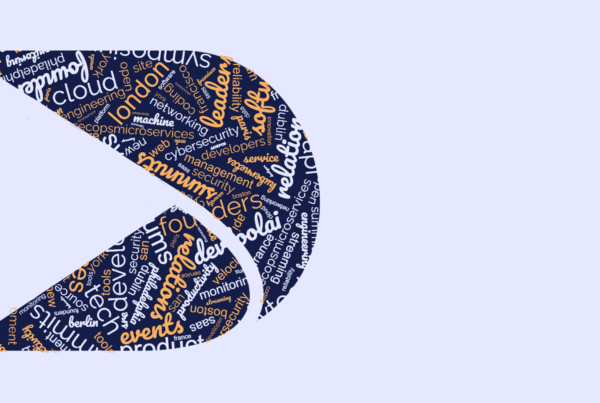If you work in tech, you will be all too familiar with the concept of a Daily Standup (also known as the ‘Daily Scrum’) – a key pillar of any Agile Methodology. The aim is for this to be a short (15 minutes typically), well-organised meeting to establish what everyone is working on, to get everyone on the same page, and to identify any obstacles that are hindering progress. The three questions typically asked during these meetings are:
- What did you do yesterday?
- What will you do today?
- What’s getting in your way?
The idea is that the Daily Standup will improve communication, lead to faster decision-making and as a result of having them frequently, they will eliminate the need for more lengthier meetings.
However, they divide opinion. In many companies they are poorly managed which results in longer meetings that waste everyone’s time and lead to frustration and meeting fatigue. As a result, there has been much discussion within the community if Daily Standups are still effective in this day and age. With most teams spread across the world in different time zones, working on different projects and now that we have great communication and coordination tools, does the Daily Standup still serve modern-day development teams?
In this article, we’ll explore the pros and cons of daily standup meetings for software development teams and delve into some modern tools that facilitate asynchronous daily standups (i.e. standups that occur without real-time conversation or meetings).
Pros of Daily StandUp Meetings
👍Improved Communication and Alignment:
Daily standups provide a platform for team members to communicate progress, discuss challenges, and align their efforts. This fosters a sense of shared responsibility and promotes better coordination among team members.
👍Transparency and Accountability:
Standups encourage team members to be transparent about their tasks, ensuring that everyone is aware of ongoing work. This transparency promotes accountability and reduces the likelihood of tasks slipping through the cracks.
👍Quick Issue Identification and Resolution:
Daily standups allow for prompt identification of roadblocks or blockers. Team members can collaborate to find solutions, preventing delays and improving overall productivity.
👍Facilitation of Cross-Functional Collaboration:
Standups bring together different roles within a team, fostering cross-functional collaboration. This leads to a better understanding of each team member’s contributions and challenges.
👍Incremental Progress Tracking:
Daily standups provide a snapshot of daily accomplishments and upcoming tasks. This incremental tracking aids in gauging project progress and helps identify potential bottlenecks early on.
Cons of Daily StandUp Meetings
👎Time-Consuming:
Daily standups, if not efficiently managed, can consume a significant amount of time, especially in larger teams. The time spent in standups could potentially outweigh the benefits gained from the meeting.
👎Lack of Relevance for All Team Members:
In larger teams, not all team members may be directly involved in each other’s tasks. As a result, standup meetings might not be relevant for everyone, leading to reduced engagement and participation.
👎Reduced Flexibility:
The rigid structure of daily standups might not accommodate team members who work in different time zones or have varying work schedules. This lack of flexibility can hinder effective communication and collaboration.
👎Overemphasis on Reporting:
Daily stand-ps can sometimes devolve into status reporting sessions rather than focused discussions on collaboration and issue resolution. This overemphasis on reporting may lead to decreased engagement and enthusiasm among team members.
👎Information Overload:
In larger teams, the sheer amount of information shared in standups can become overwhelming, making it difficult to retain relevant details and action items.
Modern Tools for Asynchronous Daily Stand-Ups
In response to the challenges posed by traditional daily stand-ups, several tools have emerged to facilitate asynchronous communication and collaboration:
- Standuply, advertised as an ‘Agile Development Assistant’ is a Slack-based (or Teams-based) tool that enables teams to conduct asynchronous stand-up meetings. Members provide updates through Slack messages (using text, voice or video), and Standuply compiles and shares these updates at a designated time. Standuply also offers customisable questions and reporting features to track progress over time. This approach allows team members to contribute their updates on their own schedules.
- Jell is a versatile tool that offers features for both synchronous and asynchronous stand-up meetings. Team members can provide updates through text, audio, or video messages. Jell provides a centralised platform for tracking progress and staying connected. Jell also provides goal tracking, feedback features, and integrations with other popular tools. Free trials available.
- Geekbot is a Teams or Slack-integrated tool that enables to conduct asynchronous standup meetings. . It supports recurring schedules and customisable questions and it allows team members to answer stand-up questions and compiles the responses into a digestible format for the team to review. Free trials available.
- Stepsize AI focuses on improving engineering team communication. It provides a way for developers to share updates on their code changes, which can serve as a form of asynchronous standup. It integrates with development tools and repositories to provide context-aware updates. It automatically generates stand-up updates based on code changes and pull requests, reducing the need for manual input and ensuring that updates are relevant to ongoing work.
- Status Hero is a tool that facilitates asynchronous standup meetings through integrations with various communication tools. Team members share updates on their tasks, goals, and blockers, and the tool compiles these updates into a digestible format for the entire team. Free trials available.
- Friday is a platform that focuses on improving team communication and collaboration. It offers asynchronous standup meetings where team members can share their updates and priorities. The tool also provides integrations with popular productivity and communication tools to streamline workflows.
The pros and cons of daily standup meetings need to be carefully considered for each team. While traditional daily stand-ups offer benefits like improved communication and alignment, they also come with potential drawbacks, particularly in larger teams. To address these challenges, modern tools provide solutions for conducting asynchronous stand-up meetings that better suit the needs of contemporary software development teams. As software development methodologies continue to evolve, the adoption of such tools can contribute to enhanced collaboration, efficient communication, and streamlined progress tracking.
References and Further Reading
Reddit https://www.reddit.com/r/ExperiencedDevs/comments/pzftmg/why_do_people_hate_daily_standups/
Stack Exchange https://pm.stackexchange.com/questions/16888/what-are-the-pros-and-cons-of-using-daily-standups
Digital Project Manager https://thedigitalprojectmanager.com/projects/pm-methodology/how-to-run-more-effective-daily-stand-up-scrums/



